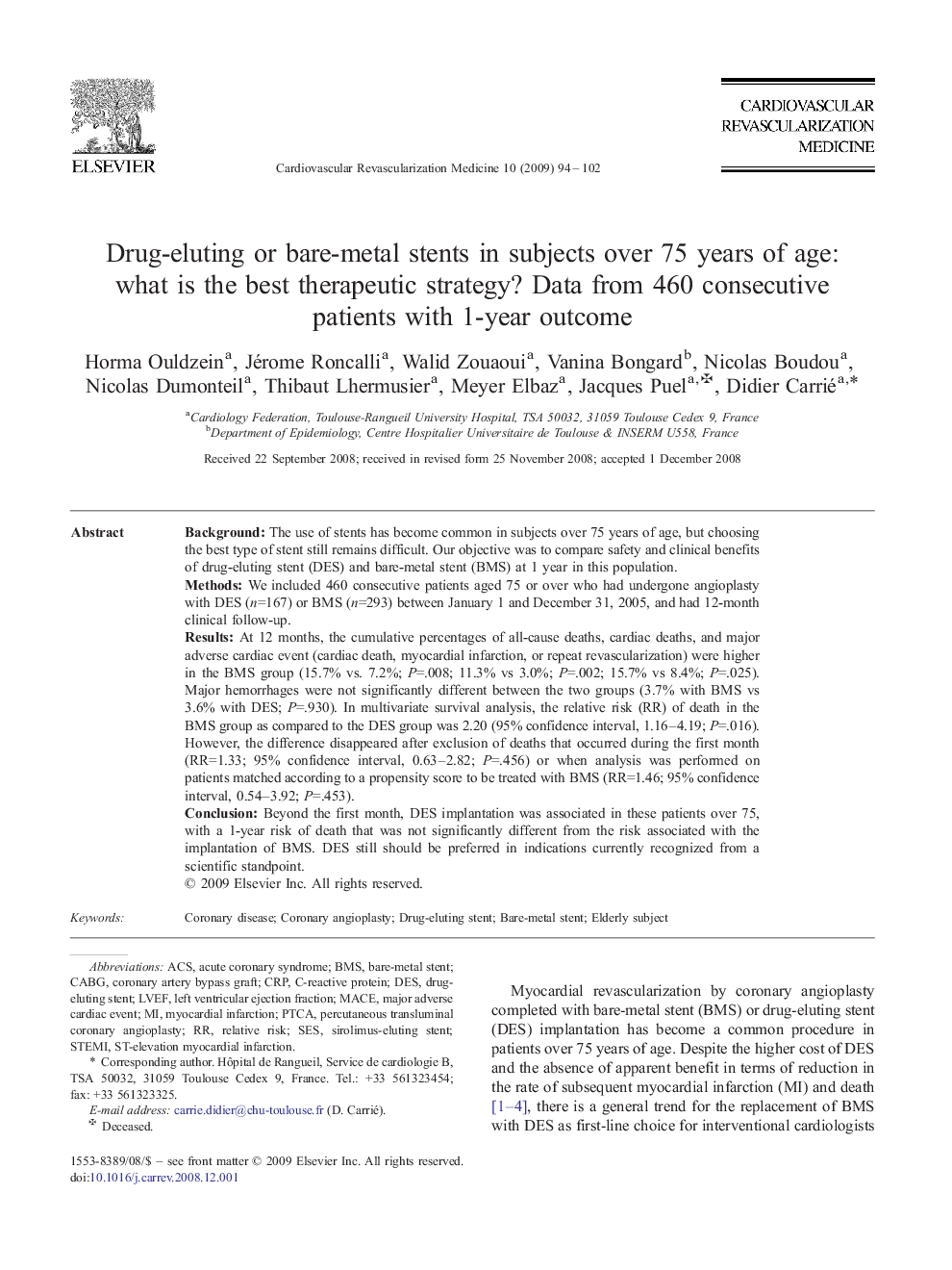| Article ID | Journal | Published Year | Pages | File Type |
|---|---|---|---|---|
| 2838130 | Cardiovascular Revascularization Medicine | 2009 | 9 Pages |
BackgroundThe use of stents has become common in subjects over 75 years of age, but choosing the best type of stent still remains difficult. Our objective was to compare safety and clinical benefits of drug-eluting stent (DES) and bare-metal stent (BMS) at 1 year in this population.MethodsWe included 460 consecutive patients aged 75 or over who had undergone angioplasty with DES (n=167) or BMS (n=293) between January 1 and December 31, 2005, and had 12-month clinical follow-up.ResultsAt 12 months, the cumulative percentages of all-cause deaths, cardiac deaths, and major adverse cardiac event (cardiac death, myocardial infarction, or repeat revascularization) were higher in the BMS group (15.7% vs. 7.2%; P=.008; 11.3% vs 3.0%; P=.002; 15.7% vs 8.4%; P=.025). Major hemorrhages were not significantly different between the two groups (3.7% with BMS vs 3.6% with DES; P=.930). In multivariate survival analysis, the relative risk (RR) of death in the BMS group as compared to the DES group was 2.20 (95% confidence interval, 1.16–4.19; P=.016). However, the difference disappeared after exclusion of deaths that occurred during the first month (RR=1.33; 95% confidence interval, 0.63–2.82; P=.456) or when analysis was performed on patients matched according to a propensity score to be treated with BMS (RR=1.46; 95% confidence interval, 0.54–3.92; P=.453).ConclusionBeyond the first month, DES implantation was associated in these patients over 75, with a 1-year risk of death that was not significantly different from the risk associated with the implantation of BMS. DES still should be preferred in indications currently recognized from a scientific standpoint.
